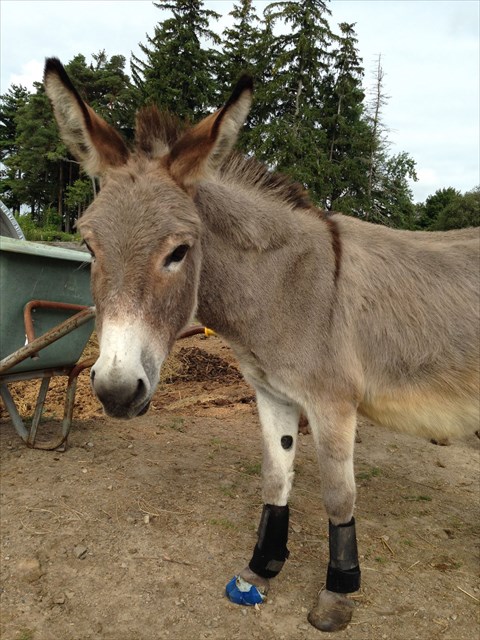There are a number of differences between horse and donkey feet. Donkeys’ feet are more upright (between 5° and 10° more) than horses’ feet and is "boxier" than the horse foot (the horse’s foot is more conical). The sole of the hoof is also more U-shaped, whereas the sole of a horse’s foot is more round. Donkeys are adapted to live in a dry environment. They thrive in semi-arid parts of the world where the ground is dry and stony, and where, for most of the year, the vegetation is of poor feed value and very fibrous. Their feet are more efficient at absorbing water than horses' hooves are due to the dry environment in which they evolved.
When donkeys are kept on lush, wet pasture, or live in areas that can be wet for large portions of the year, their feet easily become soft and more crumbly. They quite frequently get foot diseases associated with this, such as: infection of the sole and frog (thrush), infected, penetrating wounds (abscesses), or seedy toe (where stones and dirt get stuck up and under part of the hoof wall, resulting in parts of the hoof needing to be removed).

Peter, sporting his leg supports and a wrapped foot to help treat an abcess. Yes, that's duct tape holding the poultice in place:-) (1991 - Nov 2016)